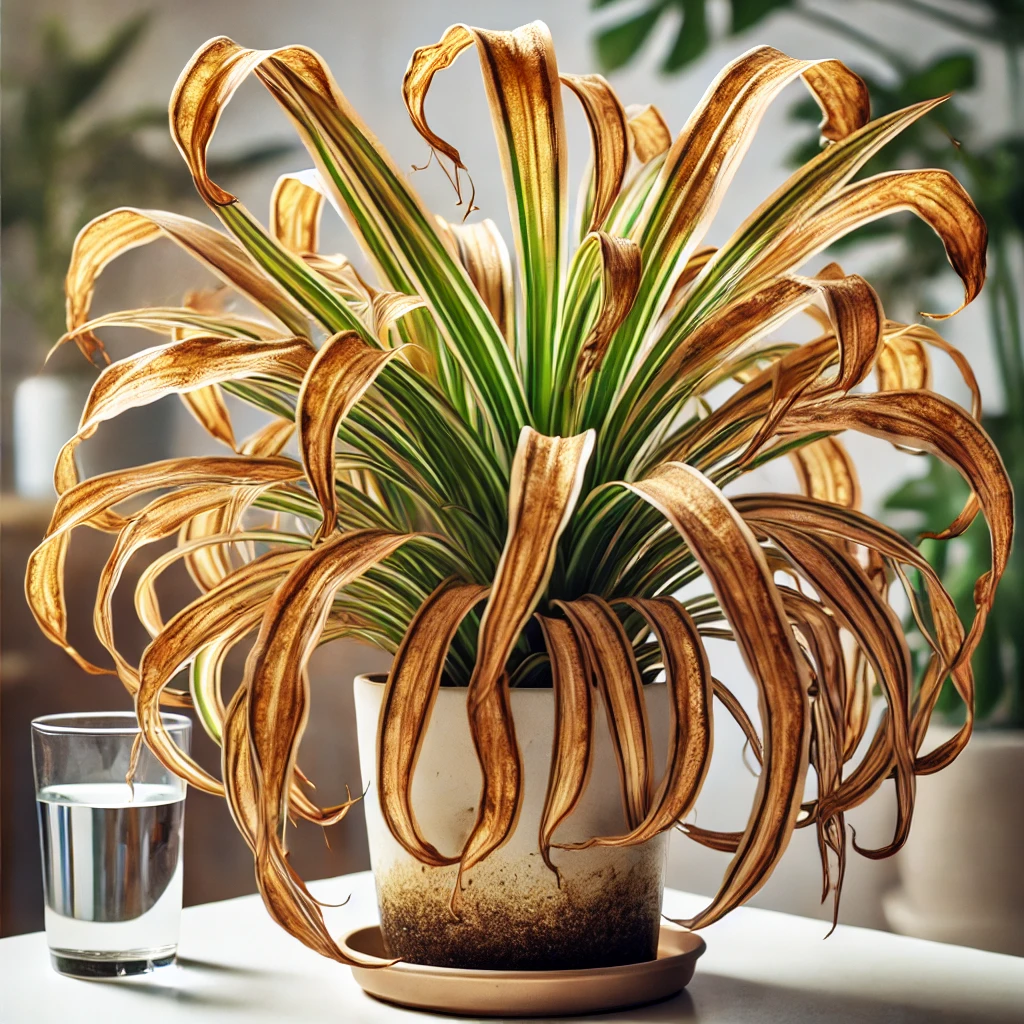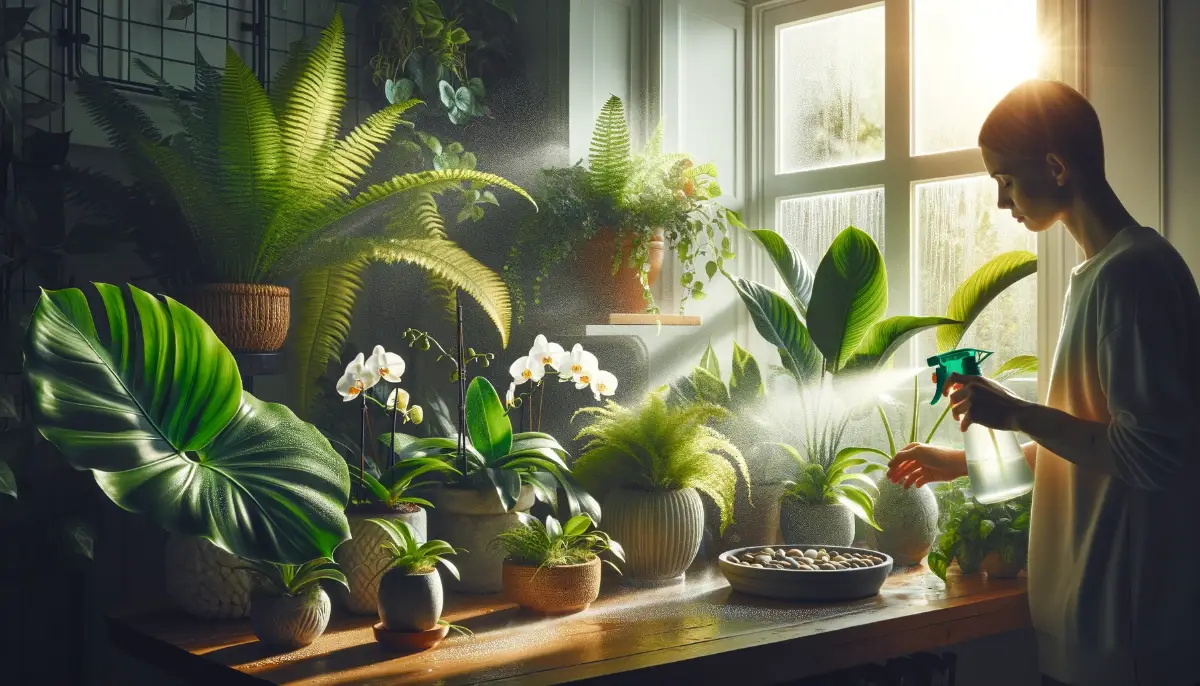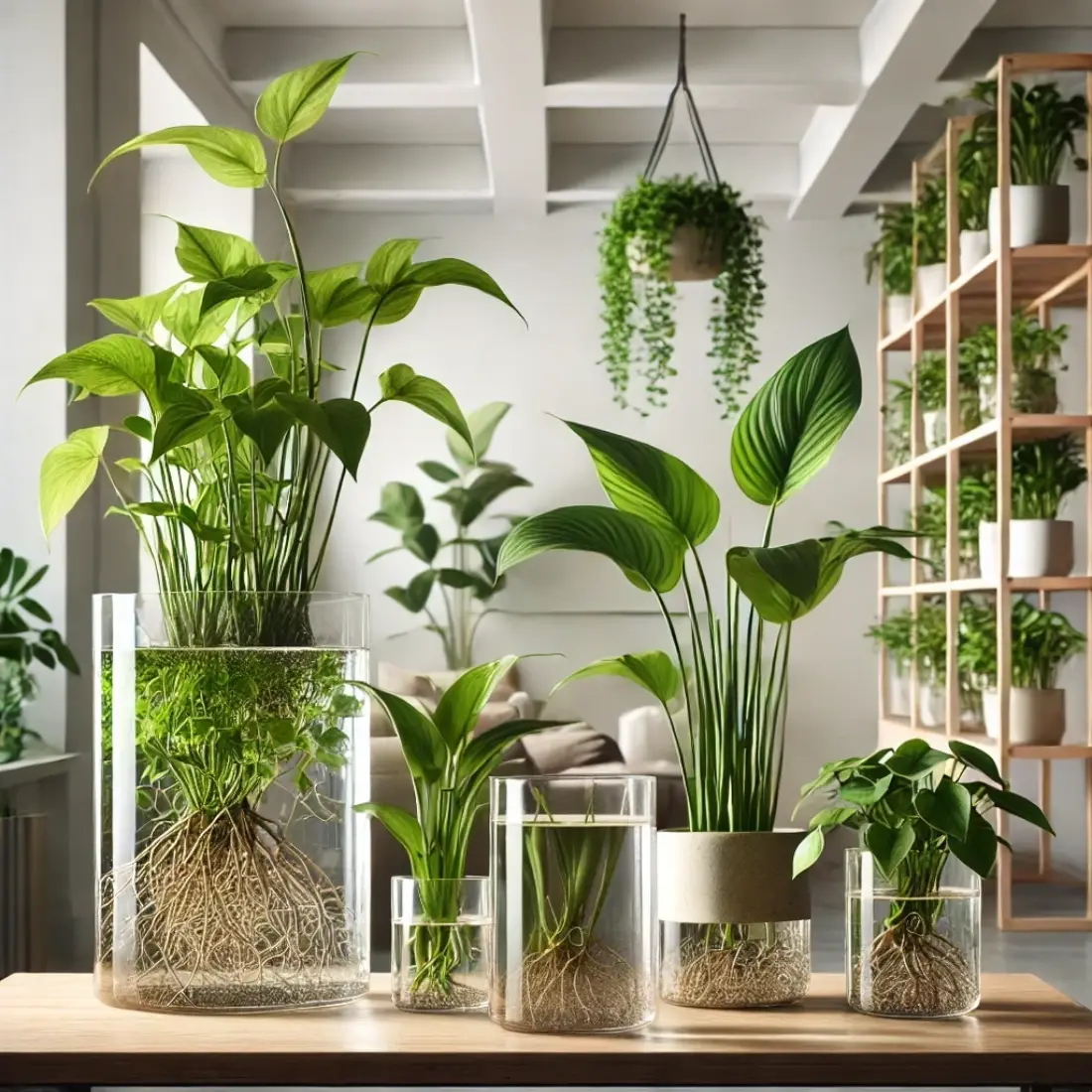Watering your indoor garden is more than just giving your plants a drink—it’s about understanding their needs and providing the right balance. Too much water can suffocate roots, while too little leaves plants thirsty and struggling.
Add the importance of proper drainage to the mix, and you’ve got the recipe for a thriving indoor garden.
- Proper watering methods are critical to plant health.
- Poor drainage often causes overwatering issues, like root rot.
- Bottom watering and well-draining pots can prevent common watering mistakes.
- The right techniques make all the difference for vibrant indoor gardens.
The Right Watering Methods for Indoor Plants
Watering isn’t just pouring water over soil. Each method has its pros and cons, depending on your plant type and setup.
1. Top Watering: The Classic Method
Top watering is the most common technique. It involves pouring water directly onto the soil.
How to Do It:
- Water slowly and evenly until water drains from the bottom of the pot.
- Ensure you don’t soak the leaves.
Best For:
- Most houseplants, like pothos, philodendrons, and monsteras.
- Plants in well-draining soil and pots with drainage holes.
Caution: Avoid wetting leaves on sensitive plants like African violets to prevent fungal diseases.
Tip: Use lukewarm water to avoid shocking the roots, especially in colder months.
2. Bottom Watering: Deep Hydration
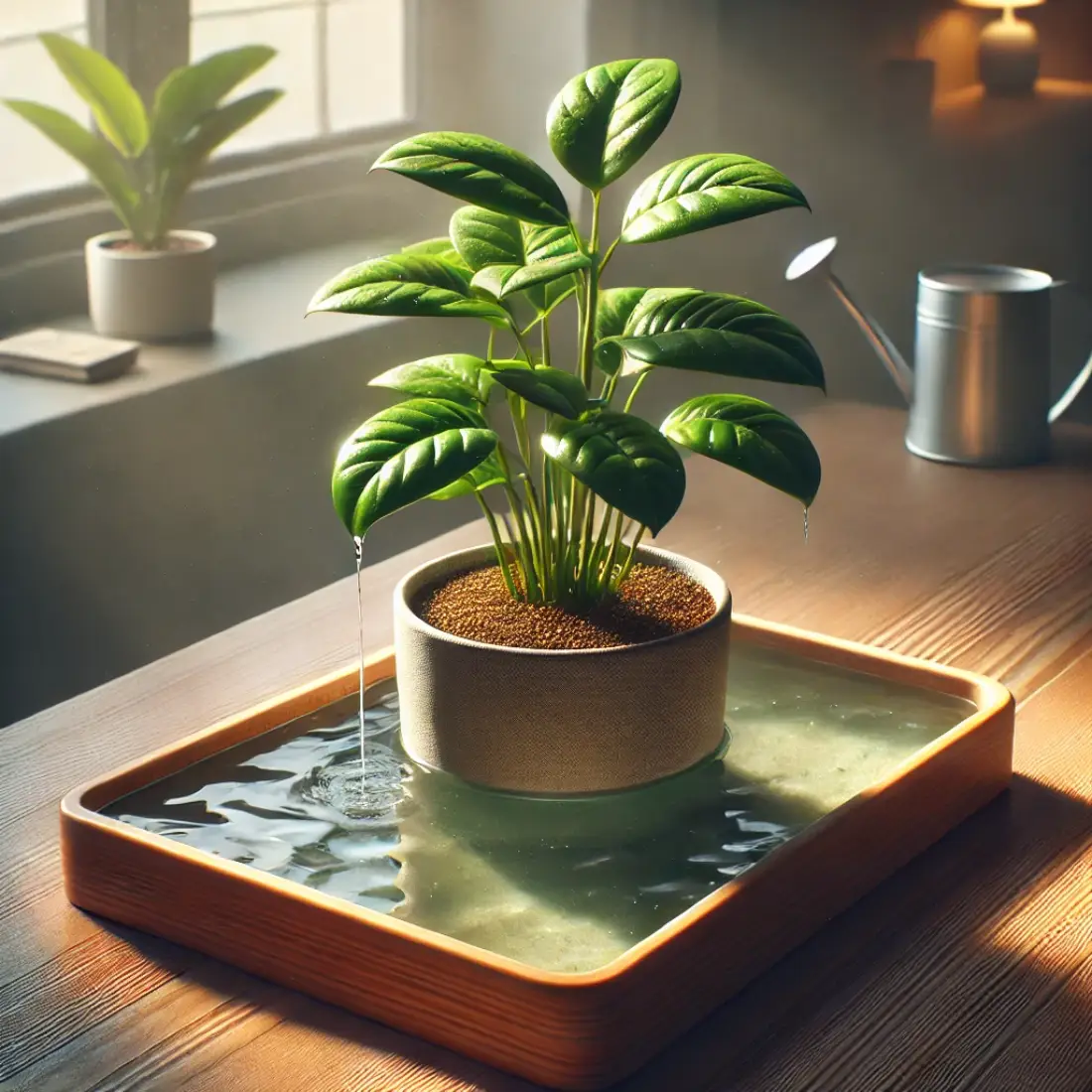
This method allows plants to absorb water from the bottom up, promoting strong root systems.
How to Do It:
- Place your plant in a shallow tray of water.
- Let it sit for 20-30 minutes or until the topsoil feels moist.
Best For:
- Plants that are prone to root rot.
- Avoiding surface pests like fungus gnats.
Benefits:
- Encourages deeper root growth.
- Keeps the soil surface dry, reducing disease risks.
Tip: Combine bottom watering with occasional top watering to flush out excess salts from fertilizers.
3. Soaking for Dry Soil
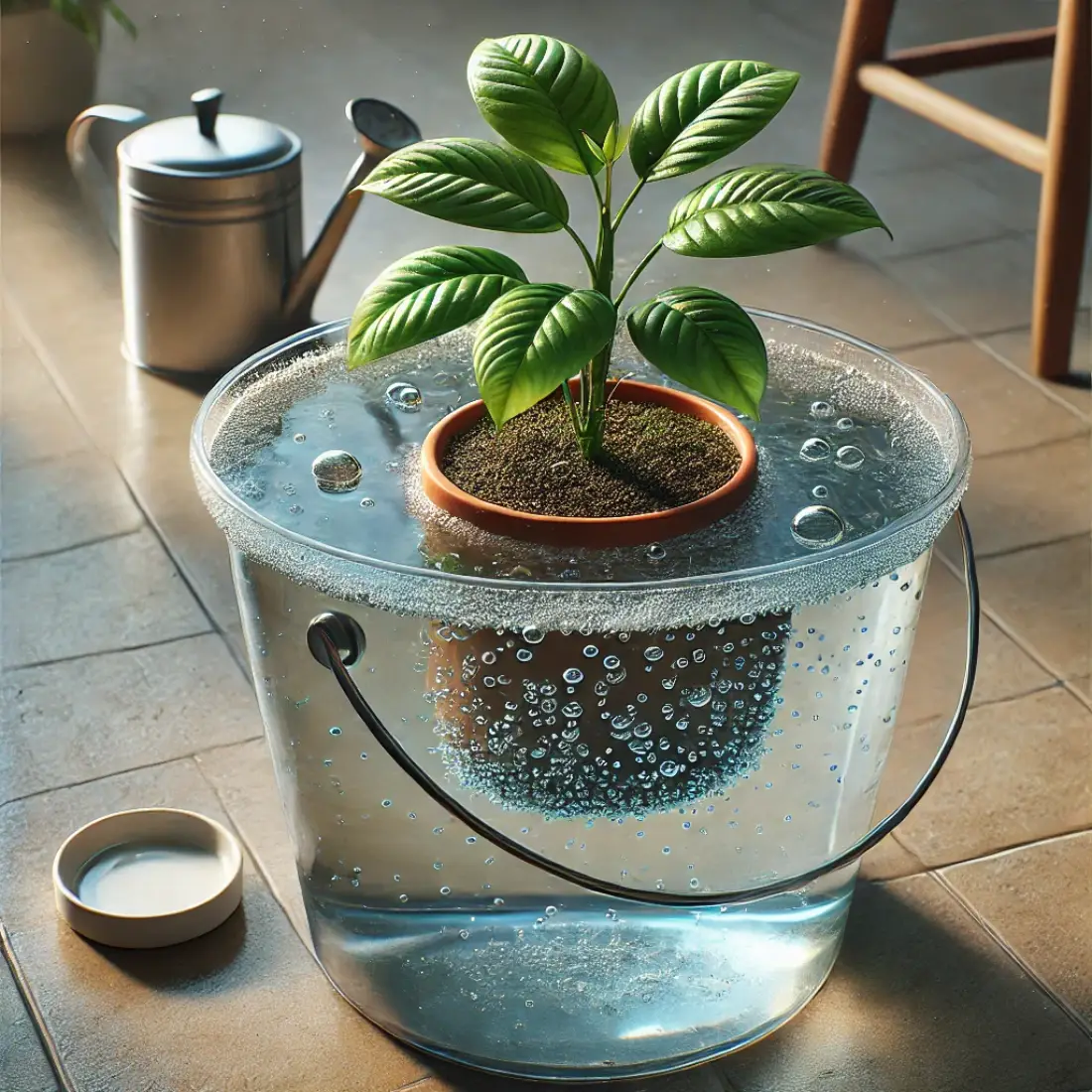
Sometimes, soil becomes so dry it repels water. Soaking is an excellent way to rehydrate it.
How to Do It:
- Immerse the pot in a bucket of water until the bubbles stop rising.
- Allow the pot to drain thoroughly before placing it back on its saucer.
Best For:
- Severely underwatered plants.
- Reviving dry, compacted soil.
Caution: Don’t soak plants regularly, as it can lead to overwatering and suffocated roots.
4. Misting: Supplemental Humidity
Misting is not a primary watering method but helps plants that thrive in humid environments.
How to Do It:
- Lightly spray the leaves and surrounding air with a fine mist.
Best For:
Caution: Avoid misting plants with fuzzy or velvety leaves, as moisture can lead to fungal growth.
Why Proper Drainage is Crucial
Did you know that overwatering is one of the leading causes of indoor plant death? Surprisingly, it’s not always about too much water—it’s often due to poor drainage.
Proper drainage ensures your plants’ roots get the oxygen they need. When water pools in the soil, it creates an anaerobic (oxygen-free) environment that suffocates roots and encourages root rot.
Common Signs of Poor Drainage
- Water sits on the soil surface for long periods.
- The pot feels heavy and the soil is consistently soggy.
- Yellowing leaves and a musty smell are present.
How to Improve Drainage
1. Choose the Right Pots
- Always opt for pots with drainage holes. These allow excess water to escape, preventing waterlogging.
- If you prefer decorative pots without holes, double-pot your plant by placing it in a smaller pot with drainage inside the decorative one.
2. Skip the Pebbles
Contrary to popular belief, adding pebbles at the bottom of a pot does not improve drainage. Instead, it reduces the soil’s volume and creates a “perched water table,” trapping water above the pebbles.
3. Use the Right Soil Mix
- Choose well-draining soil mixes with ingredients like perlite, sand, or orchid bark.
- Avoid dense, heavy soils that retain too much moisture.
4. Empty Saucer Trays Regularly
When water collects in saucers beneath your pots, empty them promptly to prevent roots from sitting in stagnant water.
Drainage Tips for Different Plant Types
- Cacti and Succulents: These desert plants need sandy, well-draining soil and pots with multiple drainage holes.
- Tropical Plants: While they enjoy moist soil, they still need pots that drain excess water.
Tip: Check your pots every few months. If soil compacts or drainage slows, repot the plant into fresh, loose soil.
FAQ: Perfecting Watering and Drainage
How often should I water my indoor plants?
It depends on the plant type, light conditions, and time of year.
- Most plants prefer the top inch of soil to dry out before watering.
- Tropical plants like ferns may need more frequent watering.
Can I fix a plant that’s been overwatered?
Yes! Remove the plant from its soggy soil, trim away rotting roots, and repot in fresh, well-draining soil.
Why is my plant’s soil staying wet?
Poor drainage is often the culprit. Ensure your pot has drainage holes and avoid using compact soil mixes.
Is bottom watering better than top watering?
Both have benefits:
- Bottom watering encourages deep root growth.
- Top watering flushes out excess salts. A combination works best.
Do I need to mist all my plants?
No. Misting is only helpful for humidity-loving plants like ferns and calatheas. Most plants do fine without it.


